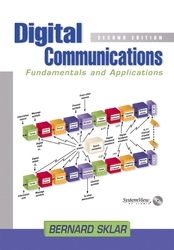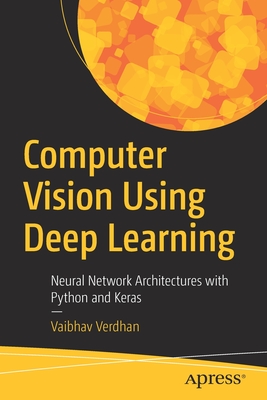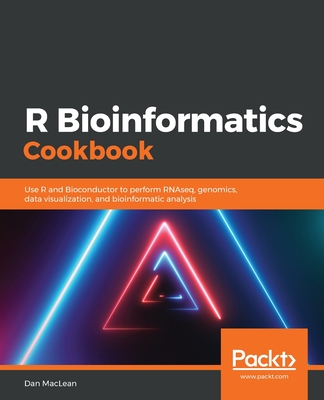Information Science (Hardcover)
暫譯: 資訊科學 (精裝版)
David G. Luenberger
- 出版商: Princeton University
- 出版日期: 2006-04-16
- 售價: $1,400
- 貴賓價: 9.8 折 $1,372
- 語言: 英文
- 頁數: 448
- 裝訂: Hardcover
- ISBN: 0691124183
- ISBN-13: 9780691124186
下單後立即進貨 (約5~7天)
買這商品的人也買了...
-
 STRUTS 實作手冊(Struts in Action: Building Web Applications with the Leading Java Framework)
STRUTS 實作手冊(Struts in Action: Building Web Applications with the Leading Java Framework)$690$538 -
 MATLAB 程式設計-入門篇, 2/e
MATLAB 程式設計-入門篇, 2/e$600$199 -
 鳥哥的 Linux 私房菜基礎學習篇, 2/e
鳥哥的 Linux 私房菜基礎學習篇, 2/e$780$663 -
 MATLAB 程式設計延伸技巧
MATLAB 程式設計延伸技巧$650$514 -
 MATLAB 7 程式設計-應用篇
MATLAB 7 程式設計-應用篇$300$270 -
 駭客攻防技術擂臺
駭客攻防技術擂臺$520$411 -
 Ajax + PHP 整合應用範例集
Ajax + PHP 整合應用範例集$520$406 -
 Solidworks 2007 實戰演練-進階應用
Solidworks 2007 實戰演練-進階應用$480$408 -
 Ajax 設計模式 (Ajax Design Patterns)
Ajax 設計模式 (Ajax Design Patterns)$780$616 -
 Visual Basic 2005 Express 程式設計經典教本
Visual Basic 2005 Express 程式設計經典教本$580$452 -
 Visual C# 2005 建構資訊系統實戰經典教本
Visual C# 2005 建構資訊系統實戰經典教本$650$507 -
 SCJP Java 5 專業認證手冊 (SCJP Sun Certified Programmer for Java 5 Study Guide)(Exam 310-055)
SCJP Java 5 專業認證手冊 (SCJP Sun Certified Programmer for Java 5 Study Guide)(Exam 310-055)$880$695 -
 碼上就用 ASP.NET 2.0 (ASP.NET 2.0 Instant Results)
碼上就用 ASP.NET 2.0 (ASP.NET 2.0 Instant Results)$580$493 -
 Visual C# 2005 程式開發與介面設計秘訣
Visual C# 2005 程式開發與介面設計秘訣$750$593 -
 時間管理─給系統管理者 (Time Management for System Administrators)
時間管理─給系統管理者 (Time Management for System Administrators)$480$379 -
 聖殿祭司的 ASP.NET 2.0 專家技術手冊-使用 VB
聖殿祭司的 ASP.NET 2.0 專家技術手冊-使用 VB$720$569 -
 Ruby Programming-向 Ruby 之父學程式設計
Ruby Programming-向 Ruby 之父學程式設計$550$429 -
 Visual Basic 2005 程式設計與案例剖析
Visual Basic 2005 程式設計與案例剖析$650$514 -
 SQL Server 2005 MDX 商業智慧應用
SQL Server 2005 MDX 商業智慧應用$650$553 -
 Ruby on Rails 建置與執行 (Ruby on Rails: Up and Running) (書況略舊,不介意在下單)
Ruby on Rails 建置與執行 (Ruby on Rails: Up and Running) (書況略舊,不介意在下單)$580$458 -
 SQL 之美學 (The Art of SQL)
SQL 之美學 (The Art of SQL)$620$490 -
 SQL Server 2005 資料庫管理
SQL Server 2005 資料庫管理$680$578 -
 Web Layout 設計的美學
Web Layout 設計的美學$580$458 -
 Solidworks 2007 實戰演練-基礎入門
Solidworks 2007 實戰演練-基礎入門$480$408 -
 Mac 玩家特區─蘋果人最愛的超酷軟體嚴選
Mac 玩家特區─蘋果人最愛的超酷軟體嚴選$399$315
商品描述
Description
From cell phones to Web portals, advances in information and communications technology have thrust society into an information age that is far-reaching, fast-moving, increasingly complex, and yet essential to modern life. Now, renowned scholar and author David Luenberger has produced Information Science, a text that distills and explains the most important concepts and insights at the core of this ongoing revolution. The book represents the material used in a widely acclaimed course offered at Stanford University.
Drawing concepts from each of the constituent subfields that collectively comprise information science, Luenberger builds his book around the five "E's" of information: Entropy, Economics, Encryption, Extraction, and Emission. Each area directly impacts modern information products, services, and technology--everything from word processors to digital cash, database systems to decision making, marketing strategy to spread spectrum communication.
To study these principles is to learn how English text, music, and pictures can be compressed, how it is possible to construct a digital signature that cannot simply be copied, how beautiful photographs can be sent from distant planets with a tiny battery, how communication networks expand, and how producers of information products can make a profit under difficult market conditions.
The book contains vivid examples, illustrations, exercises, and points of historic interest, all of which bring to life the analytic methods presented:
- Presents a unified approach to the field of information science
- Emphasizes basic principles
- Includes a wide range of examples and applications
- Helps students develop important new skills
- Suggests exercises with solutions in an instructor's manual
Table of Contents
Preface xiii
Chapter 1: INTRODUCTION 1
1.1 Themes of Analysis 2
1.2 Information Lessons 4Part I: ENTROPY: The Foundation of Information
Chapter 2: INFORMATION DEFINITION 9
2.1 A Measure of Information 10
2.2 The Definition of Entropy 12
2.3 Information Sources 14
2.4 Source Combinations 15
2.5 Bits as a Measure 16
2.6 About Claude E. Shannon 17
2.7 Exercises 18
2.8 Bibliography 19Chapter 3: CODES 21
3.1 The Coding Problem 21
3.2 Average Code Length and Entropy 27
3.3 Shannon's First Theorem 30
3.4 Exercises 33
3.5 Bibliography 34Chapter 4: COMPRESSION 35
4.1 Huffman Coding 35
4.2 Intersymbol Dependency 40
4.3 Lempel-Ziv Coding 44
4.4 Other Forms of Compression 48
4.5 Exercises 52
4.6 Bibliography 53Chapter 5: CHANNELS 55
5.1 Discrete Channel 56
5.2 Conditional and Joint Entropies 57
5.3 Flipping a Channel 60
5.4 Mutual Information 62
5.5 Capacity* 65
5.6 Shannon's Second Theorem* 66
5.7 Exercises 68
5.8 Bibliography 69Chapter 6: ERROR-CORRECTING CODES 70
6.1 Simple Code Concepts 71
6.2 Hamming Distance 73
6.3 Hamming Codes 75
6.4 Linear Codes 77
6.5 Low-Density Parity Check Codes 78
6.6 Interleaving 79
6.7 Convolutional Codes 80
6.8 Turbo Codes 82
6.9 Applications 83
6.10 Exercises 85
6.11 Bibliography 86
Summary of Part I 89Part II: ECONOMICS: Strategies for Value
Chapter 7: MARKETS 93
7.1 Demand 94
7.2 Producers 97
7.3 Social Surplus 99
7.4 Competition 100
7.5 Optimality of Marginal Cost Pricing 101
7.6 Linear Demand Curves 102
7.7 Copyright and Monopoly 103
7.8 Other Pricing Methods 107
7.9 Oligopoly 108
7.10 Exercises 111
7.11 Bibliography 113Chapter 8: PRICING SCHEMES 114
8.1 Discrimination 114
8.2 Versions 116
8.3 Bundling 119
8.4 Sharing 124
8.5 Exercises 127
8.6 Bibliography 128Chapter 9: VALUE 130
9.1 Conditional Information 131
9.2 Informativity and Generalized Entropy* 133
9.3 Decisions 135
9.4 The Structure of Value 135
9.5 Utility Functions* 139
9.6 Informativity and Decision Making* 140
9.7 Exercises 141
9.8 Bibliography 142Chapter 10: INTERACTION 143
10.1 Common Knowledge 144
10.2 Agree to Disagree? 146
10.3 Information and Decisions 149
10.4 A Formal Analysis* 150
10.5 Metcalfe's Law 153
10.6 Network Economics* 155
10.7 Exercises 159
10.8 Bibliography 160
Summary of Part II 161Part III: ENCRYPTION: Security through Mathematics
Chapter 11: CIPHERS 165
11.1 Definitions 166
11.2 Example Ciphers 166
11.3 Frequency Analysis 169
11.4 Cryptograms 169
11.5 The Vigenére Cipher 171
11.6 The Playfair Cipher 174
11.7 Homophonic Codes 175
11.8 Jefferson's Wheel Cipher 176
11.9 The Enigma Machine 177
11.10 The One-Time Pad 181
11.11 Exercises 183
11.12 Bibliography 184Chapter 12: CRYPTOGRAPHY THEORY 186
12.1 Perfect Security 186
12.2 Entropy Relations 188
12.3 Use of a One-Time Pad* 193
12.4 The DES and AES Systems 196
12.5 Exercises 197
12.6 Bibliography 198Chapter 13: PUBLIC KEY CRYPTOGRAPHY 200
13.1 A Basic Dilemma 200
13.2 One-Way Functions 201
13.3 Discrete Logarithms 202
13.4 Diffie-Hellman Key Exchange 203
13.5 Modular Mathematics 205
13.6 Alternative Puzzle Solution 208
13.7 RSA 209
13.8 Square and Multiply* 211
13.9 Finding Primes* 213
13.10 Performance* 214
13.11 The Future 215
Appendix: The Extended Euclidean Algorithm 216
13.12 Exercises 217
13.13 Bibliography 218Chapter 14: SECURITY PROTOCOLS 220
14.1 Digital Signatures 220
14.2 Blinded Signatures 223
14.3 Digital Cash 225
14.4 Identification 226
14.5 Zero-Knowledge Proofs 228
14.6 Smart Cards 231
14.7 Exercises 234
14.8 Bibliography 235
Summary of Part III 237Part IV: EXTRACTION: Information from Data
Chapter 15: DATA STRUCTURES 241
15.1 Lists 241
15.2 Trees 244
15.3 Traversal of Trees 247
15.4 Binary Search Trees (BST) 248
15.5 Partially Ordered Trees 252
15.6 Tries* 254
15.7 Basic Sorting Algorithms 255
15.8 Quicksort 257
15.9 Heapsort 260
15.10 Merges 261
15.11 Exercises 262
15.12 Bibliography 263Chapter 16: DATABASE SYSTEMS 264
16.1 Relational Structure 264
16.2 Keys 267
16.3 Operations 267
16.4 Functional Dependencies 271
16.5 Normalization 271
16.6 Joins and Products* 277
16.7 Database Languages 279
16.8 Exercises 281
16.9 Bibliography 282Chapter 17: INFORMATION RETRIEVAL 284
17.1 Inverted Files 285
17.2 Strategies for Indexing 287
17.3 Inverted File Compression* 291
17.4 Queries 293
17.5 Ranking Methods 294
17.6 Network Rankings 296
17.7 Exercises 299
17.8 Bibliography 299Chapter 18: DATA MINING 301
18.1 Overview of Techniques 301
18.2 Market Basket Analysis 303
18.3 Least-Squares Approximation 306
18.4 Classification Trees 310
18.5 Bayesian Methods 314
18.6 Support Vector Machines 319
18.7 Other Methods 323
18.8 Exercises 325
18.9 Bibliography 327
Summary of Part IV 327Part V: EMISSION: The Mastery of Frequency
Chapter 19: FREQUENCY CONCEPTS 331
19.1 The Telegraph 334
19.2 When Dots Became Dashes 335
19.3 Fourier Series 338
19.4 The Fourier Transform 339
19.5 Thomas Edison and the Telegraph 342
19.6 Bell and the Telephone 342
19.7 Lessons in Frequency 345
19.8 Exercises 347
19.9 Bibliography 349Chapter 20: RADIO WAVES 350
20.1 Why Frequencies? 350
20.2 Resonance 354
20.3 The Birth of Radio 354
20.4 Marconi's Radio 355
20.5 The Spark Bandwidth 357
20.6 The Problems 359
20.7 Continuous Wave Generation 360
20.8 The Triode Vacuum Tube 361
20.9 Modulation Mathematics 363
20.10 Heterodyne Principle 365
20.11 Frequency Modulation 367
20.12 Exercises 369
20.13 Bibliography 372Chapter 21: SAMPLING AND CAPACITY 373
21.1 Entropy 373
21.2 Capacity of the Gaussian Channel 376
21.3 Sampling Theorem 378
21.4 Generalized Sampling Theorem* 380
21.5 Thermal Noise 383
21.6 Capacity of a Band-Limited Channel 384
21.7 Spread Spectrum 385
21.8 Spreading Technique 387
21.9 Multiple Access Systems 388
21.10 Exercises 391
21.11 Bibliography 392Chapter 22: NETWORKS 393
22.1 Poisson Processes 394
22.2 Frames 395
22.3 The ALOHA System 396
22.4 Carrier Sensing 398
22.5 Routing Algorithms 399
22.6 The Bellman-Ford Algorithm 400
22.7 Distance Vector Routing 401
22.8 Dijkstra's Algorithm 402
22.9 Other Issues 404
22.10 Exercises 405
22.11 Bibliography 406
Summary of Part V 407Index 409
商品描述(中文翻譯)
**描述**
從手機到網路入口網站,資訊與通訊技術的進步使社會進入了一個深遠、快速、日益複雜且對現代生活至關重要的資訊時代。現在,著名學者和作者 David Luenberger 創作了《Information Science》,這本書提煉並解釋了這場持續革命核心的最重要概念和見解。該書代表了斯坦福大學一門廣受好評的課程所使用的教材。
Luenberger 從資訊科學的各個組成子領域中提取概念,圍繞資訊的五個「E」構建他的書籍:熵(Entropy)、經濟學(Economics)、加密(Encryption)、提取(Extraction)和發射(Emission)。每個領域都直接影響現代資訊產品、服務和技術——從文字處理器到數位現金,從資料庫系統到決策制定,從行銷策略到擴頻通信。
學習這些原則就是學習如何壓縮英文文本、音樂和圖片,如何構建一個無法簡單複製的數位簽名,如何用一個小電池從遙遠的行星發送美麗的照片,如何擴展通信網路,以及資訊產品的生產者如何在困難的市場條件下獲利。
本書包含生動的例子、插圖、練習和歷史趣聞,所有這些都使所呈現的分析方法生動起來:
- 提供對資訊科學領域的統一方法
- 強調基本原則
- 包含廣泛的例子和應用
- 幫助學生發展重要的新技能
- 提供帶有解答的練習題於教師手冊中
**目錄**
- 前言 xiii
- 第一章:介紹 1
- 1.1 分析主題 2
- 1.2 資訊課程 4
**第一部分:熵:資訊的基礎**
- 第二章:資訊定義 9
- 2.1 資訊的度量 10
- 2.2 熵的定義 12
- 2.3 資訊來源 14
- 2.4 來源組合 15
- 2.5 位元作為度量 16
- 2.6 關於 Claude E. Shannon 17
- 2.7 練習 18
- 2.8 參考文獻 19
- 第三章:編碼 21
- 3.1 編碼問題 21
- 3.2 平均編碼長度與熵 27
- 3.3 Shannon 的第一定理 30
- 3.4 練習 33
- 3.5 參考文獻 34
- 第四章:壓縮 35
- 4.1 Huffman 編碼 35
- 4.2 符號間依賴 40
- 4.3 Lempel-Ziv 編碼 44
- 4.4 其他壓縮形式 48
- 4.5 練習 52
- 4.6 參考文獻 53
- 第五章:通道 55
- 5.1 離散通道 56
- 5.2 條件熵與聯合熵 57
- 5.3 翻轉通道 60
- 5.4 互信息 62
- 5.5 容量* 65
- 5.6 Shannon 的第二定理* 66
- 5.7 練習 68
- 5.8 參考文獻 69
- 第六章:錯誤更正碼 70
- 6.1 簡單碼概念 71
- 6.2 Hamming 距離 73
- 6.3 Hamming 碼 75
- 6.4 線性碼 77
- 6.5 低密度奇偶檢查碼 78
- 6.6 交錯 79
- 6.7 卷積碼 80
- 6.8 Turbo 碼 82
- 6.9 應用 83
- 6.10 練習 85
- 6.11 參考文獻 86
- 第一部分總結 89
**第二部分:經濟學:價值策略**
- 第七章:市場 93
- 7.1 需求 94
- 7.2 生產者 97
- 7.3 社會盈餘 99
- 7.4 競爭 100
- 7.5 邊際成本定價的最優性 101
- 7.6 線性需求曲線 102
- 7.7 版權與壟斷 103
- 7.8 其他定價方法 107
- 7.9 寡頭壟斷 108
- 7.10 練習 111
- 7.11 參考文獻 113
- 第八章:定價方案 114
- 8.1 歧視 114
- 8.2 版本 116
- 8.3 綑綁 119
- 8.4 共享 124
- 8.5 練習 127
- 8.6 參考文獻 128
- 第九章:價值 130
- 9.1 條件資訊 131
- 9.2 資訊性與廣義熵* 133
- 9.3 決策 135
- 9.4 價值結構 135
- 9.5 效用函數* 139
- 9.6 資訊性與決策制定* 140
- 9.7 練習 141
- 9.8 參考文獻 142
- 第十章:互動 143
- 10.1 共同知識 144
- 10.2 同意不同意? 146
- 10.3 資訊與決策 149
- 10.4 正式分析* 150
- 10.5 Metcalfe 法則 153
- 10.6 網路經濟學* 155
- 10.7 練習 159
- 10.8 參考文獻 160
- 第二部分總結 161
**第三部分:加密:數學中的安全性**
- 第十一章:密碼 165
- 11.1 定義 166
- 11.2 示例密碼 166
- 11.3 頻率分析 169
- 11.4 密碼文 169
- 11.5 Vigenère 密碼 171
- 11.6 Playfair 密碼 174
- 11.7 同音碼 175
- 11.8 Jefferson 的輪子密碼 176
- 11.9 Enigma 機 177
- 11.10 一次性密碼本 181
- 11.11 練習 183
- 11.12 參考文獻 184
- 第十二章:密碼學理論 186
- 12.1 完美安全 186
- 12.2 熵關係 188
- 12.3 使用一次性密碼* 193
- 12.4 DES 和 AES 系統 196
- 12.5 練習 197
- 12.6 參考文獻 198
- 第十三章:公鑰密碼學 200
- 13.1 基本困境 200
- 13.2 單向函數 201
- 13.3 離散對數 202
- 13.4 Diffie-Hellman 密鑰交換 203
- 13.5 模數數學 205
- 13.6 替代謎題解法 208
- 13.7 RSA 209
- 13.8 平方與乘法* 211
- 13.9 尋找質數* 213
- 13.10 性能* 214
- 13.11 未來 215
- 附錄:擴展歐幾里得算法 216
- 13.12 練習 217
- 13.13 參考文獻 218
- 第十四章:安全協議 220
- 14.1 數位簽名 220
- 14.2 隱蔽簽名 223
- 14.3 數位現金 225
- 14.4 身份識別 226
- 14.5 零知識證明 228
- 14.6 智能卡 231
- 14.7 練習 234
- 14.8 參考文獻 235
- 第三部分總結 237
**第四部分:提取:從數據中獲取資訊**
- 第十五章:數據結構 241
- 15.1 列表 241
- 15.2 樹 244
- 15.3 樹的遍歷 247
- 15.4 二元搜尋樹(BST) 248
- 15.5 部分有序樹 252
- 15.6 Trie* 254
- 15.7 基本排序算法 255
- 15.8 快速排序 257
- 15.9 堆排序 260
- 15.10 合併 261
- 15.11 練習 262
- 15.12 參考文獻 263
- 第十六章:資料庫系統 264
- 16.1 關聯結構 264
- 16.2 鍵 267
- 16.3 操作 267
- 16.4 功能依賴 271
- 16.5 正規化 271
- 16.6 連接與乘積* 277
- 16.7 資料庫語言 279
- 16.8 練習 281
- 16.9 參考文獻 282





























